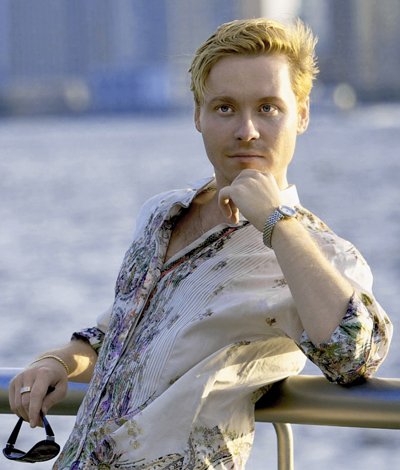Miami Symphony Orchestra closes season with hyper-emotional Russian program

Konstantin Soukhovetski performed Rachmaninoff’s Piano Concerto No. 2 Sunday night with the Miami Symphony Orchestra.
The Miami Symphony Orchestra’s final performance of its 25th anniversary season found the orchestra sounding better than ever— polished, resonant, with outstanding woodwind and brass playing.
Equally important, the concert Sunday night at the Arsht Center in Miami showed the orchestra to be highly responsive to the demanding, energetic leadership of its conductor, Eduardo Marturet.
All of these qualities were on display in the final work on the program, Tchaikovsky’s Symphony No. 5. In the first movement, Marturet kept urging more and more intensity from the orchestra, and the musicians delivered, with particularly rich, glowing and penetrating work by the strings. Principal horn Hector Rodriguez gave a smooth, refined account of his second movement solo. Strings in the third movement were flowing and graceful in the opening melody, crisp and precise in the quicker passages that followed.
While it’s difficult to put too much emotion into Tchaikovsky, this performance came close. There were times when the music felt too free, leaving the listener without enough of a rhythmic grid. And occasionally balances felt a little off, with too much brass or too little, and too much timpani. But all in all it was a lustrous, refined account that expressed the hyper-emotionalism of Tchaikovsky’s symphony.
When the Russian pianist Konstantin Soukhovetski walked on stage to perform Rachmaninoff’s Piano Concerto No. 2, he looked less like the typical concert pianist and more like Elton John showing up to play at Caesar’s Palace. A sparkly white sport coat, black pants, heavy-rimmed glasses and blond hair that fell below his shoulders showed that he wasn’t worrying too much about conforming to norms of the concert world.
His playing was a lot less colorful than his appearance. His performance often felt too straight and businesslike, without any feeling for the smoky emotionalism of Rachmaninoff’s melodies. Yet he showed precisely that in his encore performance of Rachmaninoff’s Vocalise, drawing out the long melodic line with style and warm emotion.
The problem may have been due to issues with the orchestra. Rarely do you hear a pianist have to fight so hard to be heard. Rachmaninoff gives a lot of melodies to the orchestra over the piano, and the orchestra gave a fine account of them. But the piano’s percussive contribution is essential, and in large sections of each movement Marturtet allowed the orchestra to just drown him out.
The concert opened with the Polovetsian Dances from Borodin’s opera Prince Igor, one of those brilliant concert pieces that shows off an orchestra. In the famous melody of the “Gliding Dance of the Maidens,” Marturet barely conducted, giving wind soloists the space to give sensitively phrased performances in gleaming tones. The “Wild Dance of the Men,” with its brutal, swooping lines, came off with a rough, barbaric power appropriate to a portrayal of a nomadic Asian tribe, with roiling blasts in tuba and trombones.
The Miami Symphony Orchestra opens its 2014-15 season Oct. 4 at the Arsht Center, with Mendelssohn’s Calm Sea and Prosperous Voyage, Rachmaninoff’s Rhapsody on a Theme of Paganini with pianist Lola Astanova and Brahms’ Symphony No. 1. themiso.org.
Posted in Performances
Leave a Comment
Mon May 5, 2014
at 12:38 pm
No Comments